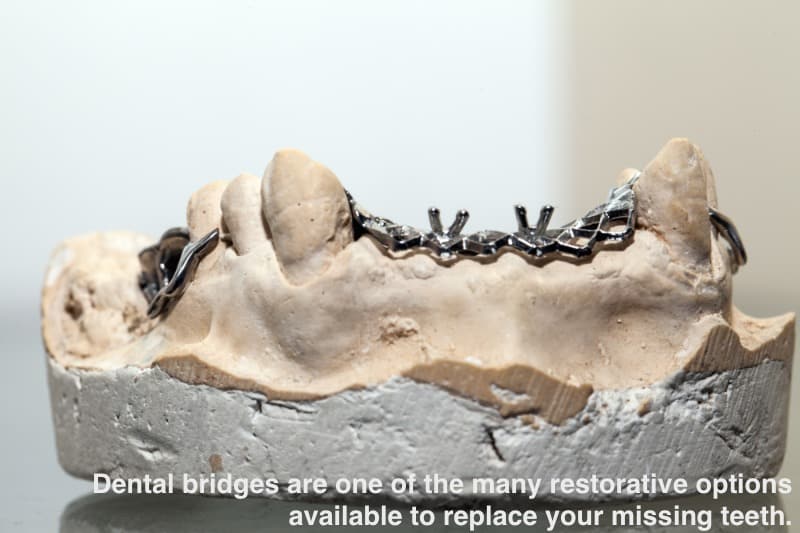Dental bridges are one of the many restorative options available to replace your missing teeth. As the name implies, the dental bridge is used to ‘bridge’ the gap caused by tooth loss between the teeth. This dental appliance is consist of three crowns – the two crowns located at both ends of the appliance serve as abutments or anchorage to the healthy adjacent teeth next to the gap, and the middle crown serves as a pontic, or a false teeth. In cases where there are no healthy adjacent teeth available to serve as abutments, dental implants are used instead. A dental bridge is fixed, meaning its abutment crown is cemented on the healthy adjacent teeth or a dental implant. The bridge is made from different materials which include metals – gold and silver, all porcelain and porcelain fused to metals.
It usually takes two dental visits to complete a dental bridge. During the first dental visit, a local anesthetic is injected to the teeth that will serve as abutments to make the procedure more comfortable. The healthy teeth that will serve as abutments are prepared by reshaping and resizing them to accommodate the crowns that will hold the pontic in place. Next a dental impression of the abutments are made and sent to a dental laboratory to manufacture a custom-fit dental bridge. Finally a temporary bridge is placed to protect the prepared abutments. On your second visit, the temporary bridge is removed and replaced by your custom-fit bridge; and it is adjusted to ensure proper fitting. If the fitting is sufficient, it is then permanently cemented in place.
There are advantages and risks of dental bridges use. The advantages are:
- It replaces your missing teeth.
- It restores the function of your teeth like chewing and speaking properly.
- It prevents your remaining teeth from shifting which causes problem in your bite.
- It reduces the risk of bone loss thus maintaining the structures of your face.
- The bridges are permanently fixed thus preventing it from moving like dentures.
The risks of using dental bridges include:
- An ill fitting bridge can cause decay of the tooth under the crown.
- There is a reduction of the structures of natural healthy teeth to accommodate the appliance in place.
- The restoration can collapse if the supporting teeth are not strong enough.
- In the long run, they need to be eventually replaced.
Now that you know the advantages and risks of dental bridges, you can make a wise decision whether to choose this option to replace missing teeth or consider another option. You need to discuss this with your dentist so that your further questions regarding dental bridges are addressed.


